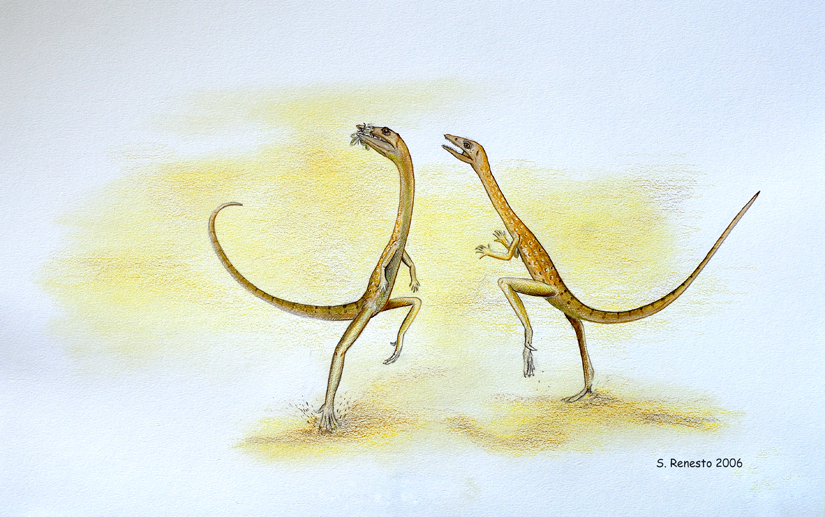[Recent Entries][Archive][Friends][User Info]
| February 16th, 2012 | ||||||||||
|---|---|---|---|---|---|---|---|---|---|---|
| 08:41 pm [industrialterro] [Link] |
Macrocnemus Macrocnemus is an extinct genus of prolacertiform reptile from the Middle Triassic of Europe. Two species have been named, the type species M. bassanii and the species M. fuyuanensis. Macrocnemus bassanii (Nopcsa 1931) Ladinian, Middle Triassic ~220mya, is known from several specimens ranging in size and varying in morphology. Romer (1970) considered Macrocnemus a lepidosaur. Carroll (1988) placed it with Protorosaurus and Prolacerta, which is where most current workers consider it, but that would be an error. Here, following a larger phylogenetic analysis, Macrocnemus is derived from a sister to the basal lizard, Huehuecuetzpalli. The smallest Macrocnemus, BES SC 111, is also the most primitive. Larger species are considered below. As in HuehuecuetzpalMacrocnemus bassanii (Nopcsa 1931) Ladinian, Middle Triassic ~220mya, is known from several specimens ranging in size and varying in morphology. Romer (1970) considered Macrocnemus a lepidosaur. Carroll (1988) placed it with Protorosaurus and Prolacerta, which is where most current workers consider it, but that would be an error. Here, following a larger phylogenetic analysis, Macrocnemus is derived from a sister to the basal lizard, Huehuecuetzpalli. The smallest Macrocnemus, BES SC 111, is also the most primitive. Larger species are considered below. As in Huehuecuetzpalli, this clade practices isometric growth, so all morphological differences are indeed valid traits, not signs of immaturity within a single genus or species. BES SC 111 (Renesto & Avanzini 2002) ~30 cm, was previously described as a juvenile, but has a tooth count a third higher than in the larger T4822. Phylogenetically it appears at the base of a clade that includes all the larger specimens of Macrocnemus, which in turn lead to Tanystropheus, Dinocephalosaurus and Langobardisaurus + Tanytrachelos. BES SC 111 also leads to Jesairosaurus and Cosesaurus. Distinct from Huehuecuetzpalli, the rostrum was further elongated, the postorbital portion was shortened and the jugal produced a quadratojugal process. The teeth were all small, numerous and in contact with one another. The maxilla was nearly as tall as the orbit. The cervicals series of eight was robust and elongated, clearly distinct from the dorsals. All neural spines were short. Only two sacrals were present, but adjoining vertebrae had broad transverse processes. The chevrons were further reduced and many were appressed to their centrum. Gastralia were present. The coracoid and scapula had no fenestrations and the short scapula had a posterior lean. The two centrale appear to have migrated to the medial carpus but remain posterior to distal carpal I. Manual digit V was shorter than metacarpal IV.
Tags: Вымершие рептилии, Триас, архозавроморфы, диапсиды, проторозавры | |||||||||
| Comments | ||||||||||
I am so happy to come across this piece of write up, very much advanced my understanding to the next top level. Great job and continue to do same. rankdle | ||||||||||





